Radium E14 LED Lamps Dimmable
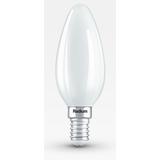
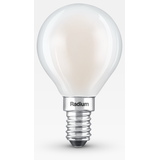

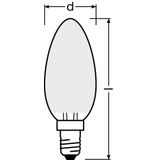
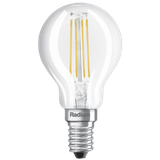
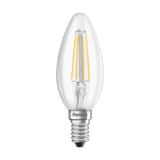
radium e14 led lamps dimmable for hospitality and retail
Radium’s E14 dimmable range targets small‑socket luminaires where size and visual comfort matter: chandeliers, wall sconces, mirror lights, and compact pendants. Engineers pick these lamps when they need stable phase‑cut dimming on 230 V, uniform tint across batches, and a tidy mechanical envelope that fits tight shades.
Product range and series overview – radium e14 dimmable led
Core form factors: C35/C37 candle (clear or frosted), G45/P45 globe, and T26 tubular for mirror bars. Typical electrical rating 220–240 V, 50/60 Hz with integrated drivers. Output classes:
- 4–5 W → 350–470 lm for decorative circuits and small rooms.
- 6–7 W → 600–806 lm for corridors and brighter dining zones.
- Select high‑efficiency variants reaching 900–1,000 lm in compact envelopes for duty lighting.
Standard CCT sets are 2200 K (vintage ambience), 2700 K (hospitality), 3000 K (retail/office), and 4000 K (back‑of‑house). Color quality options include CRI ≥ 90 SKUs for true wood and skin tones. Filament styles give near‑omnidirectional 300–320° distribution; opal diffusers soften luminance in bare‑lamp fixtures.
Technical specifications and standards
- Dimming: phase‑cut with best results on trailing‑edge (RC) dimmers; leading‑edge (RL) supported where specified. Plan homogeneous loads per channel to avoid low‑level stepping.
- Electrical: PF 0.85–0.95 typical on dimmable models; THD < 20%. Inrush is modest versus driver‑based luminaires, easing breaker coordination.
- Optical: SDCM ≤ 3 for batch consistency; CRI 80/90 options. Filament optics minimize glare in multi‑arm chandeliers.
- Lifetime: LED packages validated to LM‑80 with projections via TM‑21; project baselines commonly L70/B50 25,000–35,000 h at tₐ 25 °C.
- Safety/EMC: design aligned with IEC/EN 62560 and EN 62612; emissions EN 55015, immunity EN 61547. Photobiological evaluation at luminaire level per EN 62471.
- Environment: ta −20…+40 °C, IP20. For enclosed miniature shades, select “enclosed‑rated” SKUs or step down wattage to keep tc below limit.
Two field notes. Old wall dimmers vary; pilot one circuit and freeze a vetted list. Also, loose E14 lampholders in vintage fittings cause micro‑flicker—tighten or replace sockets during retrofit.
Applications and compatibility – radium dimmable e14 led bulbs
Use candles in chandelier arms and sconces where the lamp is visible; globes in compact pendants and mirror lights; tubulars behind narrow diffusers. In guest rooms, 2700 K is the safe default; lounges often use 2200 K clear filaments for ambience, while 3000 K matches retail aisles and receptions. Where circuits mix dimmable and non‑dimmable loads, split them—turn‑down depth improves dramatically.
For AV or camera‑visible hospitality spaces, verify flicker metrics (Pst LM/SVM) with the intended dimmer hardware. If luminaires are fully enclosed, confirm the product marking for enclosed use or reduce wattage to protect lifetime.
Integration with other Radium products – radium decorative e14 led dimming
E14 circuits typically handle ambience; pair them with Radium GU10 track/downlights for accent and Radium linear luminaires for base lux. Scene control is straightforward: use DALI‑to‑phase or 0–10 V gateways upstream of compatible wall dimmers so evening/cleaning/presentation modes repeat reliably. To maintain tone between layers, lock one CCT per zone and match CRI grade across E14, GU10, and linear families.
When the brief calls for a quick swap with existing fittings, specify radium retrofit e14 dimmable by lumen pack, CCT, and glass type (clear vs opal) to keep procurement unambiguous.
Selection criteria for B2B clients
- Lumen pack vs room size: 350–470 lm for decorative circuits and bedside sconces; 600–806 lm for corridors and brighter dining rooms; ~1,000 lm where a small socket must carry general lighting.
- CCT/CRI policy: fix a single CCT per area; pick CRI 90 where skin tones and wood finishes matter.
- Dimming hardware: prefer trailing‑edge; avoid mixed loads per channel; document approved dimmers in the handover pack.
- Envelope & mass: check shade clearance and socket rigidity—long candles and G45s can foul narrow glass.
- Thermal envelope: enclosed miniature shades trap heat; either choose enclosed‑rated lamps or reduce wattage.
Procurement teams often standardize two SKUs (2700 K clear candle + 3000 K opal G45) to cover most rooms with minimal spares.
Advantages of working with Bankoflamps
- Individual B2B pricing and custom offers tailored to project phases.
- Personal account manager for samples, submittals, и logistics.
- Real‑time stock visibility across EU warehouses.
- Quick quote response (~1 hour) to meet tender windows.
- Fast order placement by EAN/MPN with clean traceability.
- Downloadable, always up‑to‑date price lists for ERP syncing.
- Lead‑time tracking and order status updates for site scheduling.
- Purchase‑history access and analytics to consolidate SKUs.
- Post‑payment (up to 30 days) for trusted clients.
- Consolidated shipment management to reduce freight cost.
- Stable pricing with validity dates; we serve France, the Baltics, Germany, Spain, Italy, Belgium, and the Netherlands.